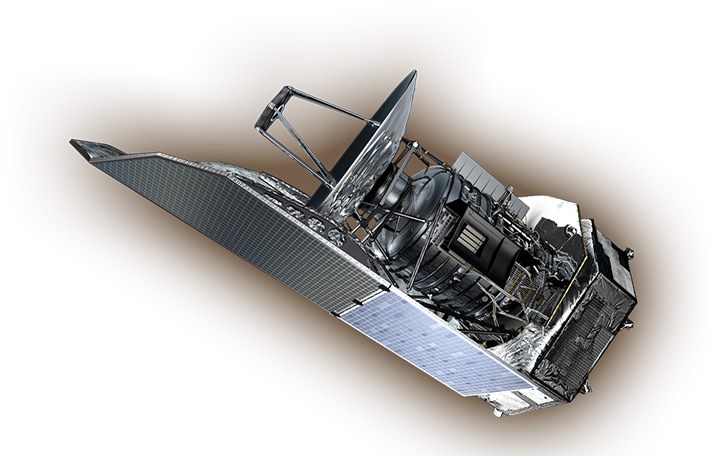
Cool Andromeda
In this new view of the Andromeda galaxy from the Herschel space observatory, cool lanes of forming stars are revealed in the finest detail yet. Herschel is a European Space Agency mission with important NASA participation.
Andromeda, also known as M31, is the nearest major galaxy to our own Milky Way at a distance of 2.5 million light-years, making it an ideal natural laboratory to study star formation and galaxy evolution.
Sensitive to the far-infrared light from cool dust mixed in with the gas, Herschel seeks out clouds of gas where stars are born. The new image reveals some of the very coldest dust in the galaxy - only a few tens of degrees above absolute zero - colored red in this image.
By comparison, warmer regions such as the densely populated central bulge, home to older stars, take on a blue appearance.
Intricate structure is present throughout the 200,000-light-year-wide galaxy with star-formation zones organized in spiral arms and at least five concentric rings, interspersed with dark gaps where star formation is absent.
Andromeda is host to several hundred billion stars. This new image of it clearly shows that many more stars will soon to spark into existence.
Image Details
- Date
- January 28, 2013
- ID
- nhsc2013-004b
- Type
- Observation
- Credit
- ESA/Herschel/PACS & SPIRE Consortium, O. Krause, HSC, H. Linz
Object Details
- Name
- Andromeda Galaxy
- Messier 31
- M31
- NGC 224
- Subject | Local Universe
- Galaxy Type Spiral
- Distance
- Lightyears 2,500,000
- Constellation
- Andromeda
Downloads
Color Mapping
| Telescope | Spectral Band | Color Assigment | Wavelength |
|---|---|---|---|
| Herschel (PACS) | Infrared | Blue | 70.0 µm |
| Herschel (PACS) | Infrared | Green | 100.0 µm |
| Herschel (PACS) | Infrared | Red | 160.0 µm |









